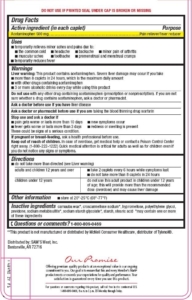Sally Greenberg: Fluoridated water is essential for public health, not a danger
Sally Greenberg: Fluoridated Water is Essential for Public Health, Not a Danger
Media contact: National Consumers League – Lisa McDonald, lisam@nclnet.org, 202-207-2829
Washington, DC— In response to recent media coverage about Robert F. Kennedy Jr. and Florida Surgeon General Joseph A. Ladapo campaigning against water fluoridation, Sally Greenberg, CEO of the National Consumers League (NCL), issued the following statement:
“Robert F. Kennedy Jr.’s statements on fluoride could jeopardize a proven public health measure. Consumers are best served by reliable, evidence-based health information, not alarmist misinformation.”
The comments made by Kennedy and Ladapo echo similar claims from the 1960s, when groups like the John Birch Society suggested that fluoridation of drinking water was a “communist plot.” Today’s anti-fluoride activists point to a 2019 Canadian study that found that pregnant mothers exposed to higher fluoride levels during pregnancy, gave birth to baby boys with slightly lower IQ’s, as measured at ages 3-4. In this study, mothers were asked to self-recall beverage consumption per day and did not take into account the children’s fluoride exposure in early childhood.
The Center for Disease Control and Prevention (CDC) calls fluoridated drinking water one of the most successful public health interventions in U.S. history, with its origins dating back to 1945 in Grand Rapids, Michigan. Since then, water fluoridation has been proven to significantly reduce rates of tooth decay, especially in economically disadvantaged and vulnerable populations. The CDC estimates that fluoridated drinking water reduces tooth decay by approximately 25% in children and adults. Health authorities, including the American Dental Association and World Health Organization, affirm that fluoride is safe at the levels currently used in the U.S.
“Fluoridated water is a vital measure to protect public health and reduce health disparities in dental care,” says Greenberg. Recent examples of removing fluoride from water, such as Calgary, Canada (2011) and Juneau, Alaska (2007), resulted in an explosion of dental decay. In both cities, the absence of fluoride in the drinking water corresponded with an increase in cavities and dental surgeries, particularly among children. For more information, visit CDC’s resources on fluoride.
###
About the National Consumers League (NCL)
The National Consumers League, founded in 1899, is America’s pioneer consumer organization. Our mission is to protect and promote social and economic justice for consumers and workers in the United States and abroad. For more information, visit www.nclnet.org.



 With 47 percent of the U.S. population projected to be obese by 2030 – and more than 2.1 billion people expected to weigh in as overweight or obese – it’s no surprise that governments worldwide have waged war on a health crisis which not only causes 5 percent of all deaths every year, but also has a $2.0 trillion economic impact annually. So what new measures can be taken that haven’t already been tried?
With 47 percent of the U.S. population projected to be obese by 2030 – and more than 2.1 billion people expected to weigh in as overweight or obese – it’s no surprise that governments worldwide have waged war on a health crisis which not only causes 5 percent of all deaths every year, but also has a $2.0 trillion economic impact annually. So what new measures can be taken that haven’t already been tried?

 Consumer education is a key step to ensuring safe acetaminophen use and preventing overdoses. A new report from the Acetaminophen Awareness Coalition (of which National Consumers League is a founding member) “
Consumer education is a key step to ensuring safe acetaminophen use and preventing overdoses. A new report from the Acetaminophen Awareness Coalition (of which National Consumers League is a founding member) “ It’s unseasonably warm this week, and I’ve found myself longing to populate my deck with plants despite the cold that may lie ahead. Growing up, my parents spent summer weekends landscaping and planting, and I feel a deep satisfaction in caring for plants. We never had a successful garden exactly, maybe some tomatoes or herbs in pots — but there was something beautiful and amazing about creating something sustaining and useful from tiny seeds.
It’s unseasonably warm this week, and I’ve found myself longing to populate my deck with plants despite the cold that may lie ahead. Growing up, my parents spent summer weekends landscaping and planting, and I feel a deep satisfaction in caring for plants. We never had a successful garden exactly, maybe some tomatoes or herbs in pots — but there was something beautiful and amazing about creating something sustaining and useful from tiny seeds. I recently wrote about the miraculous number of lives saved by tough auto safety regulations. Some states today are recording the lowest traffic fatalities ever. Why? Because of safety devices (seatbelts, airbags, etc.) and designs that were lobbied for by consumer advocates like Ralph Nader, Joan Claybrook, Advocates for Highway and Auto Safety, CARS, and Consumer Reports/Consumers Union beginning in the 1960s.
I recently wrote about the miraculous number of lives saved by tough auto safety regulations. Some states today are recording the lowest traffic fatalities ever. Why? Because of safety devices (seatbelts, airbags, etc.) and designs that were lobbied for by consumer advocates like Ralph Nader, Joan Claybrook, Advocates for Highway and Auto Safety, CARS, and Consumer Reports/Consumers Union beginning in the 1960s.












